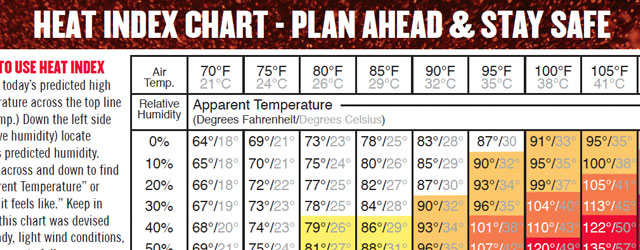Birch Vs Aspen: Choose Best Tree For Your Yard
When it comes to deciding between birch and aspen trees for your yard, there are several factors to consider. Both types of trees have their own unique characteristics, advantages, and disadvantages. In this article, we will delve into the world of birch and aspen trees, exploring their differences, similarities, and what makes them suitable for different environments and purposes.
Introduction to Birch Trees
Birch trees are known for their striking white bark and slender branches. They are part of the Betula genus and are native to the Northern Hemisphere. There are numerous species of birch trees, with the paper birch (Betula papyrifera) and the yellow birch (Betula alleghaniensis) being two of the most common. Birch trees are often associated with cold climates and are found in abundance in northern forests. They are relatively fast-growing, especially when young, and can thrive in a variety of conditions, although they generally prefer well-drained soil and full sun to partial shade.
Introduction to Aspen Trees
Aspen trees, on the other hand, belong to the Populus tremuloides species and are known for their distinctive quivering leaves. They are also native to the Northern Hemisphere and are commonly found in colonies due to their ability to grow from roots, creating large stands of genetically identical trees. Aspen trees are renowned for their unique, heart-shaped leaves that flutter in the slightest breeze, giving them a shimmering, golden appearance in the fall. They are highly adaptable and can grow in a wide range of conditions, though they prefer moist, well-drained soils and full sun.
Comparative Analysis: Birch vs. Aspen
Growth Patterns and Space Requirements
- Birch Trees: Birch trees can grow to varying heights depending on the species, with some reaching up to 50 feet tall. They have a more traditional tree shape with a single trunk and a rounded or oval crown. This makes them suitable for yards where a clear, defined tree shape is desired.
- Aspen Trees: Aspen trees typically grow to be around 40 to 50 feet tall but are known for their colony-forming habit. A single aspen tree can Colonize a large area over time through its root system, producing suckers that grow into new trees. This characteristic makes them ideal for naturalizing large areas or creating a unique, interconnected grove.
Hardiness and Disease Resistance
- Birch Trees: Birch trees are generally hardy but can be susceptible to certain diseases and pests, such as the bronze birch borer, which can be detrimental to their health. Regular maintenance and sometimes chemical treatments are necessary to protect them.
- Aspen Trees: Aspen trees are also hardy and adaptable but can be susceptible to diseases and pests. However, their ability to form large colonies can sometimes shield them from threats, as the loss of individual trees does not significantly impact the colony as a whole.
Landscape and Aesthetic Value
- Birch Trees: The aesthetic appeal of birch trees, with their white, paper-like bark, is undeniable. They add a touch of elegance and can serve as focal points in landscapes, particularly in winter when their bark is most visible.
- Aspen Trees: Aspen trees offer a dynamic display of foliage movement and sound, creating a unique sensory experience. Their fall color, while not as vibrant as some other species, has a soft, golden quality that can be quite appealing.
Decision Framework: Choosing Between Birch and Aspen
When deciding between birch and aspen trees for your yard, consider the following factors:
- Space and Growth Pattern: If you have a smaller yard or prefer a more traditional, solitary tree, a birch might be more suitable. For larger areas where naturalization is desired, aspen could be the better choice.
- Aesthetic Preference: If you value the visual elegance of white bark, birch is the way to go. For a dynamic, moving landscape feature, aspen’s quivering leaves might be more appealing.
- Maintenance and Hardiness: Both trees have their susceptibility, but aspens might require less individual tree maintenance due to their colony habit.
- Environmental Conditions: Both trees are adaptable, but consider the specific soil and sunlight conditions of your yard and how they might affect the tree’s health and appearance.
FAQ Section
Which tree is more resistant to pests and diseases?
+Neither birch nor aspen is completely immune to pests and diseases, but aspens' ability to form large, interconnected colonies can sometimes offer them a level of protection against widespread damage.
Can birch and aspen trees thrive in urban environments?
+Yes, both birch and aspen trees can thrive in urban environments, provided they receive the necessary care and conditions. However, birch trees might require more protection from urban pests and diseases.
How often should birch and aspen trees be watered?
+Both birch and aspen trees prefer moist, well-drained soils. Young trees should be watered regularly, especially during their first year of growth, to ensure establishment. Mature trees are more drought-tolerant but will still benefit from occasional watering during prolonged dry spells.
Conclusion
The choice between birch and aspen trees for your yard ultimately depends on your specific needs, preferences, and environmental conditions. Both trees offer unique advantages and can enhance your landscape in different ways. By considering factors such as space, aesthetic preference, maintenance requirements, and environmental adaptability, you can make an informed decision that suits your situation best. Whether you opt for the elegant, white bark of the birch or the dynamic, shimmering leaves of the aspen, you’ll be introducing a valuable and beautiful element into your outdoor space.


